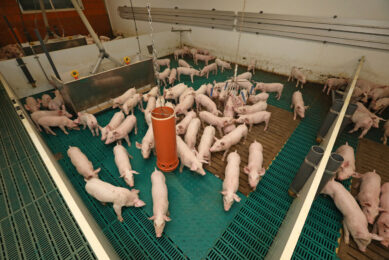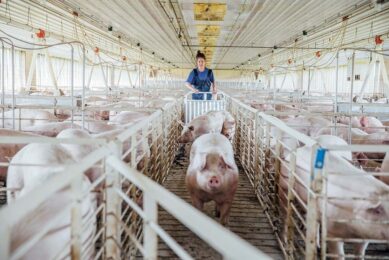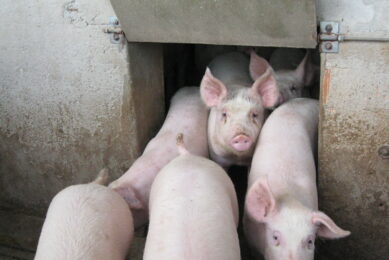Review: Health and nutrition become one in finisher pigs
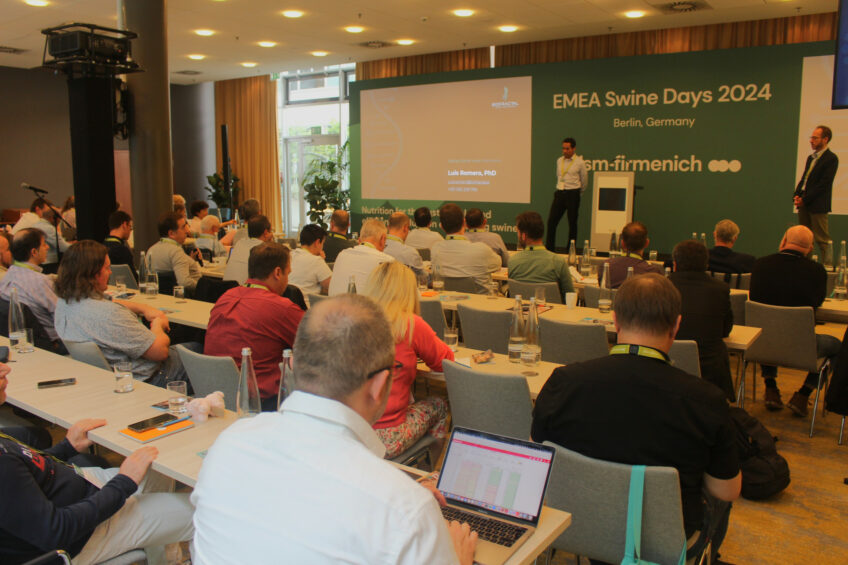
“Nutrition for the sustainable and efficient production of fattening swine.” That long tagline aimed to describe the subject of the EMEA Swine Days, held late May in Berlin, Germany. Yet the words only captured half of the message of organising company DSM-Firmenich. As developments advance at a rapid pace, nutrition and health appear to be one and the same.
It looks like the pig industry is gradually waking up to a new reality. In the past, meetings of no matter which company tended to offer that comforting sense of structure. Feeding was the area of nutrition experts, health was a privilege for veterinary speakers. Things perhaps only got a bit mixed up when a theme like “gut health” was on the table. Anno 2024, however, disciplines like microbiology, epigenetics and artificial intelligence have entered the scene. Now nutritionists, veterinarians and perhaps even geneticists start to realise that their disciplines are not only linked, but in fact are even inextricably connected if not actually all one and the same.
Take the field of vaccination. Pig vaccines obviously help in preventing disease, but in order for a vaccine to work, a pig needs to set its immune system to work. That does not just happen, but requires some of the animal’s energy resources. Once used for the immune system, those cannot be used for growth. And as pigs normally receive more than one vaccine, it sometimes gets overlooked that a pig needs more nutritional resources than necessary for growth and maintenance.
Experts extensively discussed that topic – and more “regular” interconnections of various feed components like phosphorus, calcium and vitamins – at the EMEA Swine Days, organised by DSM-Firmenich in Berlin, Germany from 21-23 May. Throughout the year, the company is holding various local editions of the finisher pig event, with also gatherings in Malaysia (in April) and the United States (later this year). 105 swine experts from 26 different countries listened to 20 key opinion leaders sharing their views in Berlin. And yes, that did include nutritionists, veterinarians and geneticists.

Finisher pig performance
After a roundtable discussion, Lisa Le Clerc, economics design engineer at the French Pork and Pig Institute (IFIP), kicked off the session by zooming in on how various major European countries were performing in terms of finishing pigs. She touched on the performances of Belgium, Denmark, France, Germany, Italy, the Netherlands and Spain.
She spoke about legislative changes in terms of welfare and environment that are awaiting the swine industry in the European Union. Perhaps those are not all directly affecting finishing pig production, but those will have repercussions for the continent’s pig production competitiveness and export position, she said. In addition, she added, in Europe there are various national programmes with the objective of reducing meat consumption.
She also brought good news for Europe’s finisher pig industry. After all, feed is the major cost when producing finisher pigs. The average compound feed price dropped substantially in 2023 in most European countries, with percentages of -2% in France to -17% in Germany. On top, pig prices went up in 2023, often with percentages higher than 20%.

Nutrient allocation revisited
Dr Maria Walsh, global marketing head for swine at DSM-Firmenich, held an insightful presentation in which she summarised the company’s key message well. Her key story revolved around nutrients for finisher pigs. She pointed out that pigs can use the available nutrients for three different ends:
- Muscle growth;
- Ensuring immune competency; and
- Ensuring good bone health.
Those 3 goals, in her view, are in constant battle of the available nutritional resources. Dr Walsh illustrated that with a pie chart in which all 3 components are present – and looked ahead to the future. She touched on the fact that pigs in the future are not the same kind of animals as they used to be in the past, due to genetic progress.
Hence future pigs will likely be able to put on more muscle weight due to lower feed conversion ratios, a tendency that is even increased by the trend to stop with castration as entire male pigs manage to grow leaner. Add to that a bigger future demand for the “immunity” part as well, because of an emphasis on vaccination and prevention in animal health – and it becomes clear that for “bones” a relatively fewer chunk is available. “Where is the compromise,” she wondered, “as pigs need to achieve more, with less?”
Pre-and post-absorptive efficiency
She also pointed to another difference between past and future: the distinction between attempts to increase “pre-absorptive efficiency” (in the past) and “post-absorptive efficiency” (a goal of today and the future). In layman’s terms: in the past, research efforts focused on making sure animals would absorb nutrients in the blood. In the future, with the help of ever-developing technology, more emphasis should go to what the animal actually does with those nutrients. After all, should an animal absorb nutrients yet not be able to use those, then those could end up being excreted in the environment after all. As Europe is going to have increasingly more attention for emissions, precision and efficiency are concepts to aim for.
In this context, she and 5 other company speakers pointed to the advantages of using the company’s existing product Hy-D (a vitamin D3 metabolite) and MaxiFicient Boost GF (a combination of Hy-D and triterpenoids – a complex to support lean growth).

More knowledge about bones
Various independent speakers came to Berlin to explore the 3 aforementioned areas in more detail. One of the most interesting an enlightening contributions came from Dr Agnès Narcy, senior scientist at the French National Institute for Research to Agriculture and the Environment (INRAE). She gave an introduction to the function of bones (mechanical – locomotion), metabolic (phosphocalcic reserve) and hematopoietic (bone marrow).
She illustrated clearly how knowledge increased over the years, from knowledge of a bone’s macrostructure to ever-deeper into the bone’s smaller elements, at the level of sub-nanostructures. And to be able to see that the tissue is in constant renewal during the life of a pig, a cycle of bone remodelling. She pointed to the fact that diet composition makes a difference whether or not an animal receives the right amount of nutrients, and pointed to the required levels of phosphorus (P), calcium (Ca) and vitamin D. And should a pig have been depleted for a while, bones can recover in terms of structure and strength.
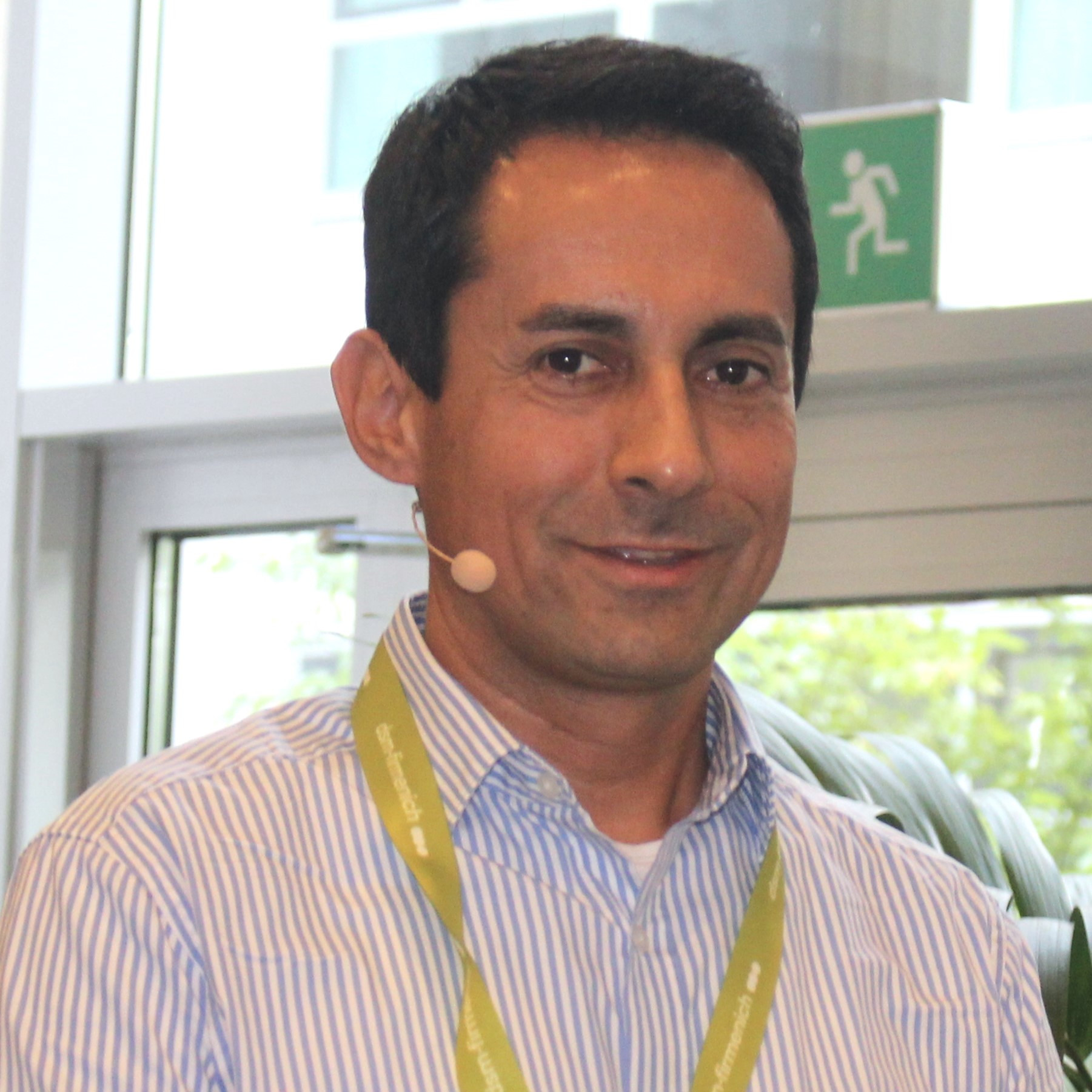
More knowledge about… everything
Dr Luis Romero, founder and general manager of the company Biofractal in Portugal gave a dazzling glimpse of the endless possibilities of precision knowledge. He spoke of the “performance black box,” that nowadays often contains ingredients like nutrition, health, production and management – and at the end there are performance outcomes. But what exactly happens inside the animal would normally be difficult to measure. His presentation therefore revolved around animal performance diagnostics powered by genetic information and artificial intelligence – opening the door to hyperdetailed data at microlevels.
His company acquires precision data using mRNA techniques – as those are vehicles of gene expression, eventually providing insights into what influences what, and how processes could be improved. He said, “We have the world’s largest farm animal gene expression database.” To illustrate that, he provided insights where exactly intra-uterine growth retarded (IUGR) pigs perform differently, and how they could be fed.



